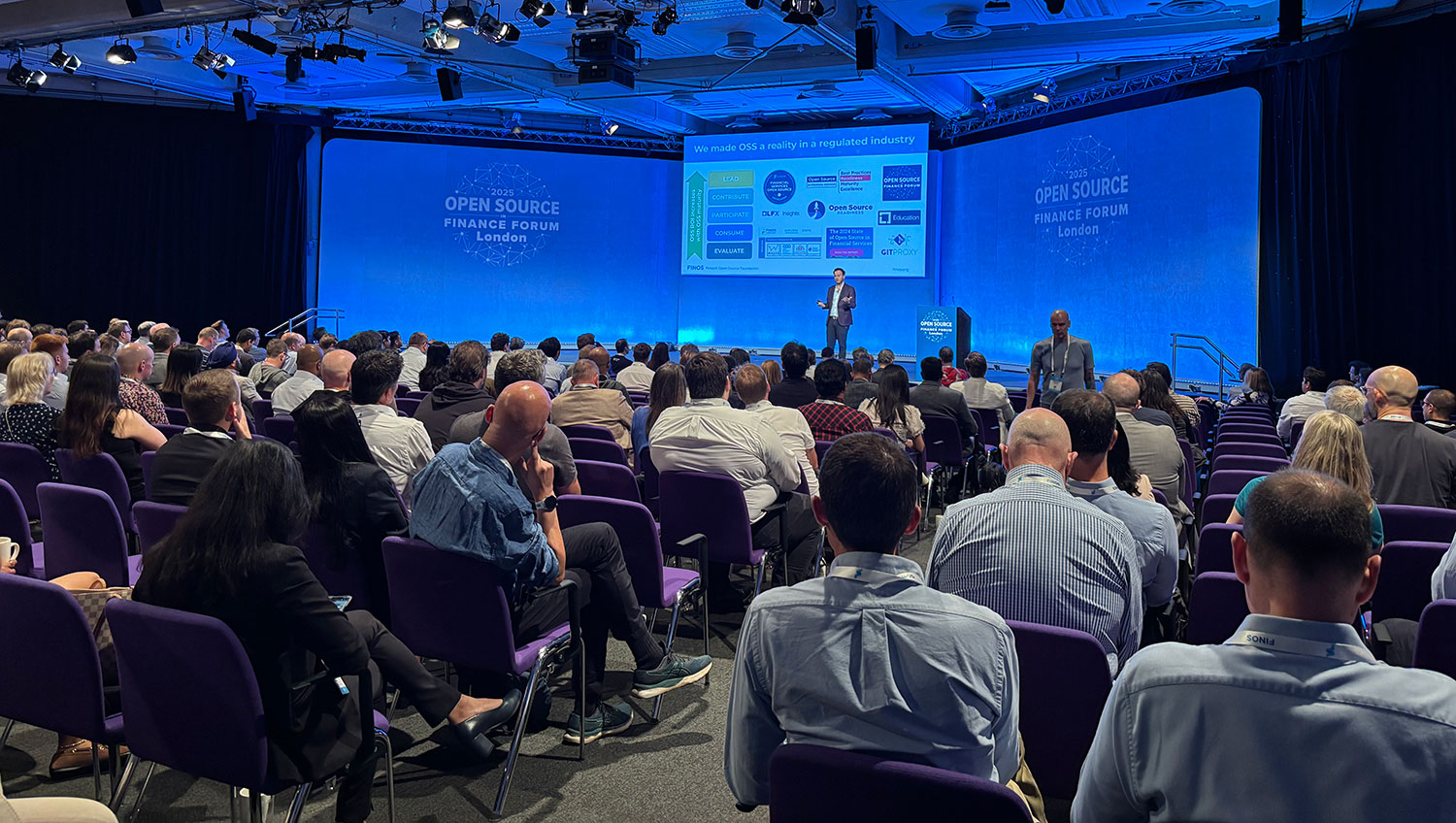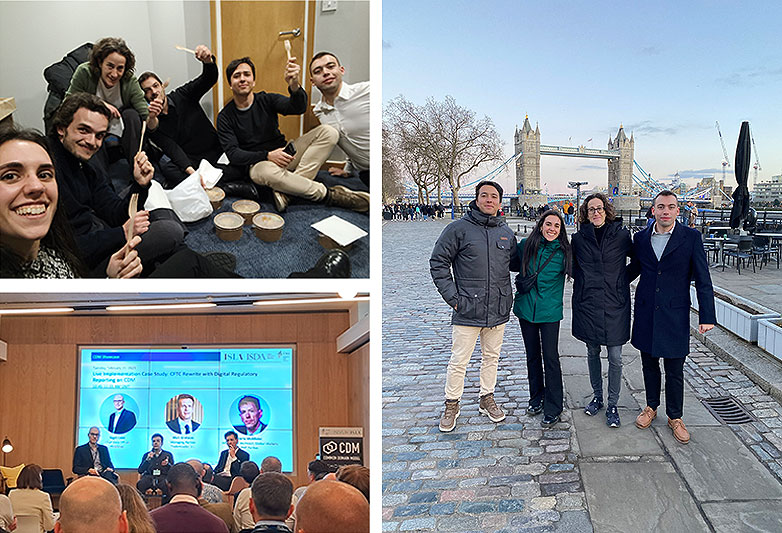FINOS’s Open Source in Finance Forum (OSFF) 2025 in London was a day of innovation, collaboration, and case-study driven progress in financial technology.
The event served as powerful evidence of the growing momentum behind frameworks such as the Common Domain Model (CDM) and ISDA’s Digital Regulatory Reporting (DRR) and their transformative potential across global markets.
But as with any good topic of debate; OSFF also highlighted critical challenges that are often overlooked.
CDM and DRR: From Compliance to Strategic Advantage
CDM and DRR were central themes at OSFF, with multiple sessions dedicated to their application and future, with discussions highlighting a surge in institutional adoption, with leading firms like J.P. Morgan currently implementing DRR for regulatory reporting but also looking for bank wide applications of CDM.
However, while some approaches advocate for extensive modeling using Domain Specific Languages (DSLs) to generate code and even map between models, this doesn't fully address potential challenges, particularly concerning the consistency and reliability of code generators and mappings between diverse models.
CDM is rapidly becoming the backbone for internal data standardisation, collateral management, and operational efficiency. By reducing reconciliation costs and operational risk, CDM enables firms to move from compliance-driven projects to strategic transformation. Yet, it’s clear that many firms still find CDM and DRR challenging to implement. The consensus at OSFF reinforced that strategic approaches—combining targeted training, robust technology, and external expertise—are essential to simplify the journey and unlock the full value of these standards.
AI in Finance: From Hype to Practical Impact
Artificial intelligence was another headline topic at OSFF, with sessions like “Agentic AI Platforms for Financial Services Automation” and “Practical Use of AI Agents in Finance”. The emergence of agentic AI—AI that can autonomously generate outcomes and drive automation at scale—is indeed reshaping the financial services landscape.
The conference explored how AI can be leveraged alongside CDM and other data standards to enhance processes such as corporate action processing, data validation, and regulatory rule analysis across jurisdictions.
A particularly interesting takeaway was the enormous potential of Agent-to-Agent (A2A) protocols. Open-sourced from Google, A2A involves building "knowledge-specific programs" or agents that can interact to automate complex financial processes. An example would be: a CDM specialist agent interacting with a DRR agent monitoring for near or close to real-time regulatory updates.
However, it was also firmly acknowledged that robust AI infrastructure is crucial, especially in regulated industries where reliability and transparency are paramount. Crucially, while AI agents offer significant efficiency gains, there remains a critical need for human oversight. Accountability and risk remain with the firm (not the AI). Our approach at TradeHeader is to leverage AI to enhance human capabilities, making human experts more effective in their tasks, and there is often too much at stake to entrust purely to agentic AI.
Tokenisation: The Next Frontier for CDM
Digital assets and tokenisation were also in the spotlight, with sessions around Tokenising CDM - again a clear sign that the sector is evolving.
Tokenisation is not just a buzzword—it’s a key area for future development and growth, with ongoing smart contract initiatives gaining traction. CDM is uniquely powerful here because it functions as a programming language, not just a static data model. This enables it to standardise the behaviour of financial products and their entire lifecycle, making it an ideal foundation for fully automating transactions via smart contracts.
By standardising the representation of financial products and events,CDM provides the common language needed for interoperability of tokenised assets across diverse Distributed Ledger Technology (DLT) platforms. This is especially critical as the industry pushes towards T+1 settlement—a milestone that requires seamless post-trade workflows.
Looking Ahead: Our Commitment to Driving Progress
OSFF 2025 made it clear: the adoption of CDM, DRR, AI, and tokenisation is accelerating, but the journey is complex with the path to seamless integration and regulatory adherence being anything but straightforward.
As co-creators and key maintainers of the FINOS Common Domain Model (CDM) and ISDA’s Digital Regulatory Reporting (DRR), we are not merely observers of this transformation; we are active participants and shapers of it. For more insights or to discuss how TradeHeader can support your CDM, DRR, AI, or tokenisation projects, get in touch.




